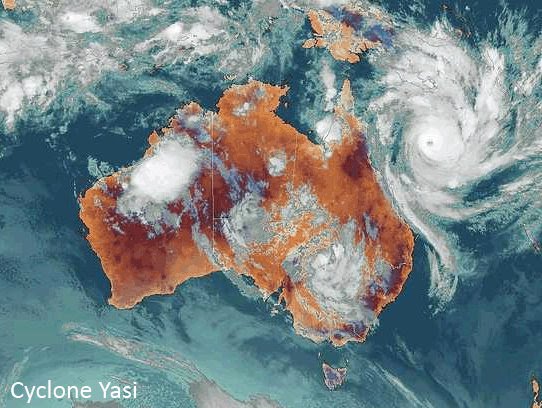
Yasi crossed the coast near Mission Beach, in north Queensland, early on February 3, devastating a number of towns in the region.
The Bureau of Meteorology has warned that although conditions aren't as intense as last season, Northern Australia can still expect an above average number of tropical cyclones in the coming summer.
The bureau is forecasting a La Nina event, which is associated with above average rainfall.
Climate models have led meteorologists to expect a slightly higher than average number of cyclones.
The Southern Oscillation Index has remained in positive territory at 11.7 last month.
Although this is not as high as the 25 on the index at the same time last year, forecasters remain concerned.
"While this La Nina may be weaker than the last, this doesn't mean we can expect fewer tropical cyclones than the previous season," bureau climate prediction manager Dr Andrew Watkins said in a statement on Monday.
"In other words we can't afford to be complacent."
While the strength and path of a tropical cyclone is difficult to predict, the bureau has a large amount of historical data to help estimate cyclone activity.
"During a La Nina, warmer waters in the western Pacific and regions to the north of Australia, and associated changes in circulation help focus tropical cyclone activity in the Coral and Timor seas," bureau climatologist Joel Lisonbee said.
While less than half of all cyclones near Australia's eastern and western coasts directly affect the regions, it's a different story on the northern coast.
More than half of all cyclones near the northern coast will impact coastal regions.
The tropical cyclone season is usually between November and April.



Reader Comments
to our Newsletter